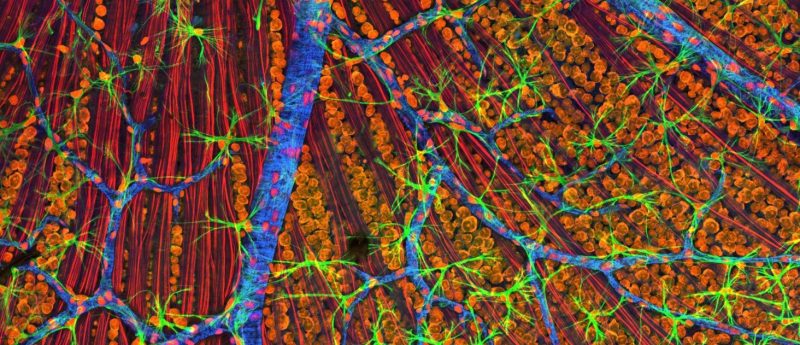Cellular processes underlying glaucoma identified using stem cells

Stepwise differentiation of retinal ganglion cells from human pluripotent stem cells enables analysis of disease processes and raises potential for treatment strategies.
Glaucoma, a relatively common condition which affects retinal ganglion cells (RGCs), can lead to optic nerve damage and vision loss if left untreated. Optic nerve injuries can also be caused by collisions in contact sports or combat injuries in soldiers. A new study conducted by researchers from Indiana University—Purdue University Indianapolis (IN, USA) has given hope for a potential treatment for these conditions through the use of stem cells.
In the study, researchers led by Jason Meyer (Indiana University—Purdue University Indianapolis) took skin cells biopsied from volunteers with an inherited form of glaucoma as well as from control volunteers without the disease. These cells were genetically reprogrammed to become pluripotent stem cells, which subsequently underwent directed stepwise differentiation to become RGCs, causing the cells to develop RGC-specific features that were observed to be different between glaucoma and control volunteers.
“Skin cells from individuals with glaucoma are no different from skin cells of those without glaucoma,” explained Meyer. “However, when we turned glaucoma patients’ skin cells into stem cells and then into RGCs, the cells became unhealthy and started dying off at a much faster rate than those of healthy individuals. Now that we have produced cells that develop features of glaucoma in culture dishes, we want to see if compounds we add to these RGCs can slow down the degeneration process or prevent these cells from dying off. We already have found candidates that look promising and are studying them.
Highlighting the groups’ vision for the future of their work, Meyer stated: “In the more distant future, we may be able to use healthy patient cells as substitute cells as we learn how to replace cells lost to the disease. It’s a significant challenge, but it’s the ultimate — and, we think, not unrealistic — long-range goal”.
— Written by Hannah Wilson
Source: Indiana University—Purdue University Indianapolis news release: http://news.iupui.edu/releases/2016/03/stem-cells-cellular-processes-glaucoma.shtml